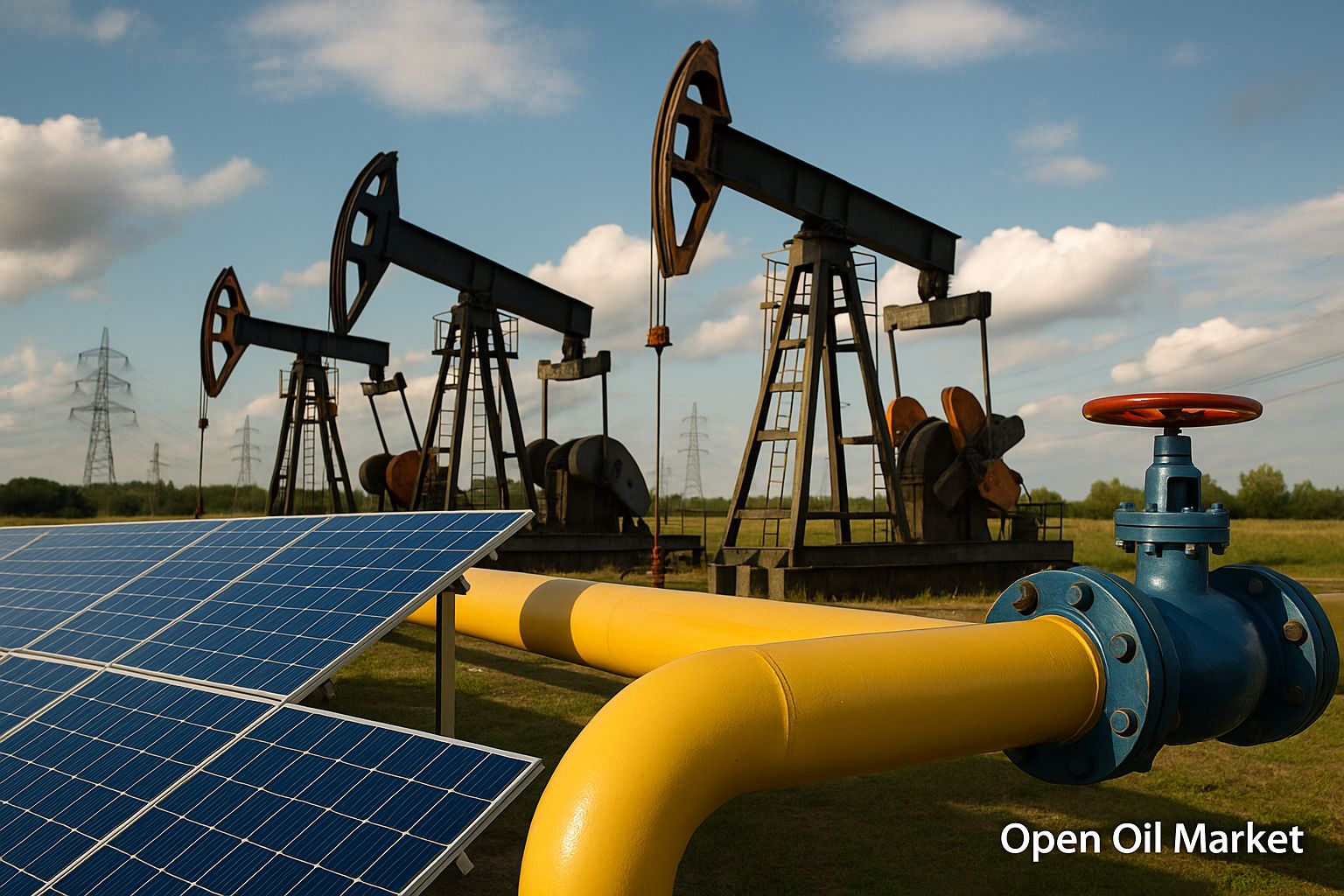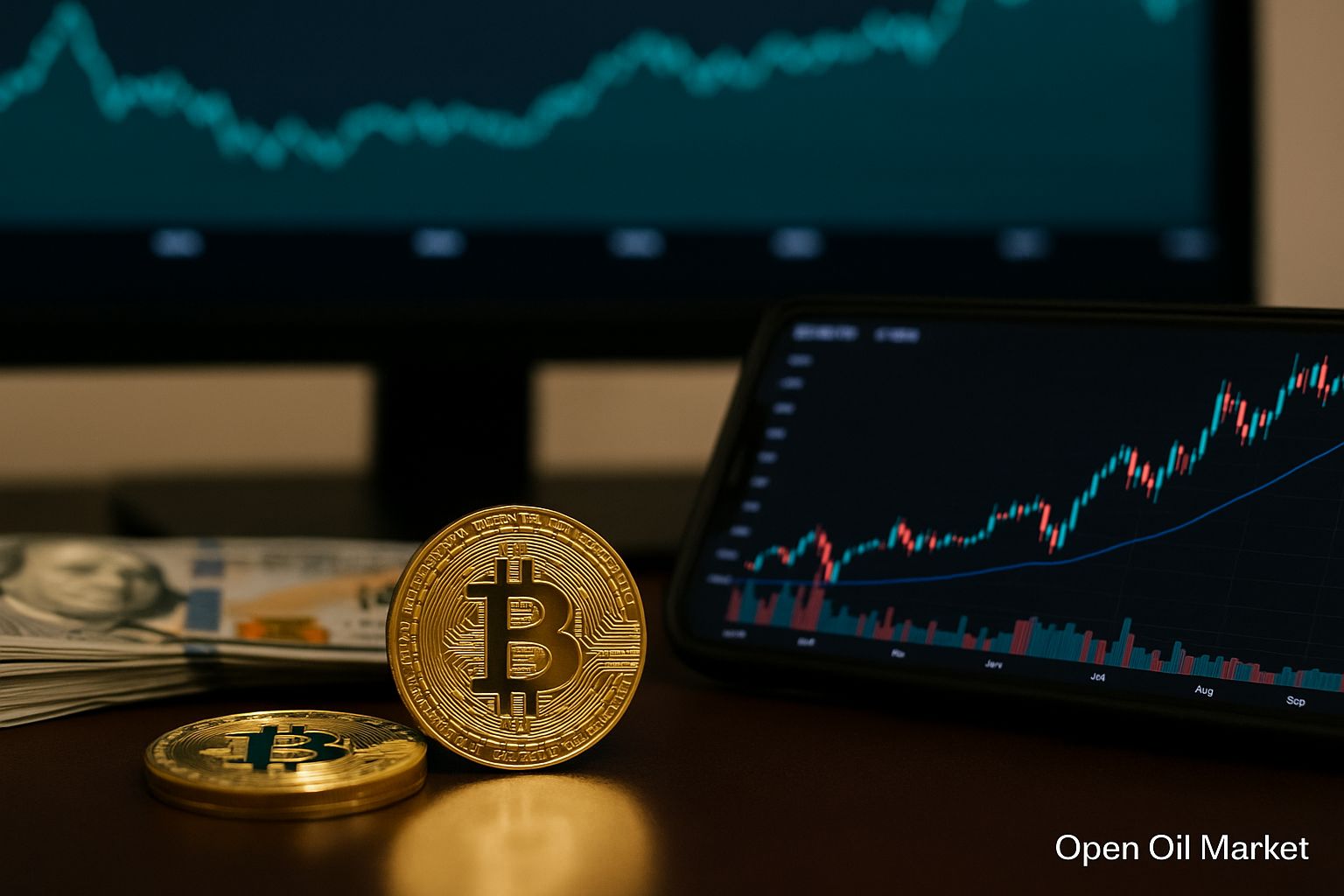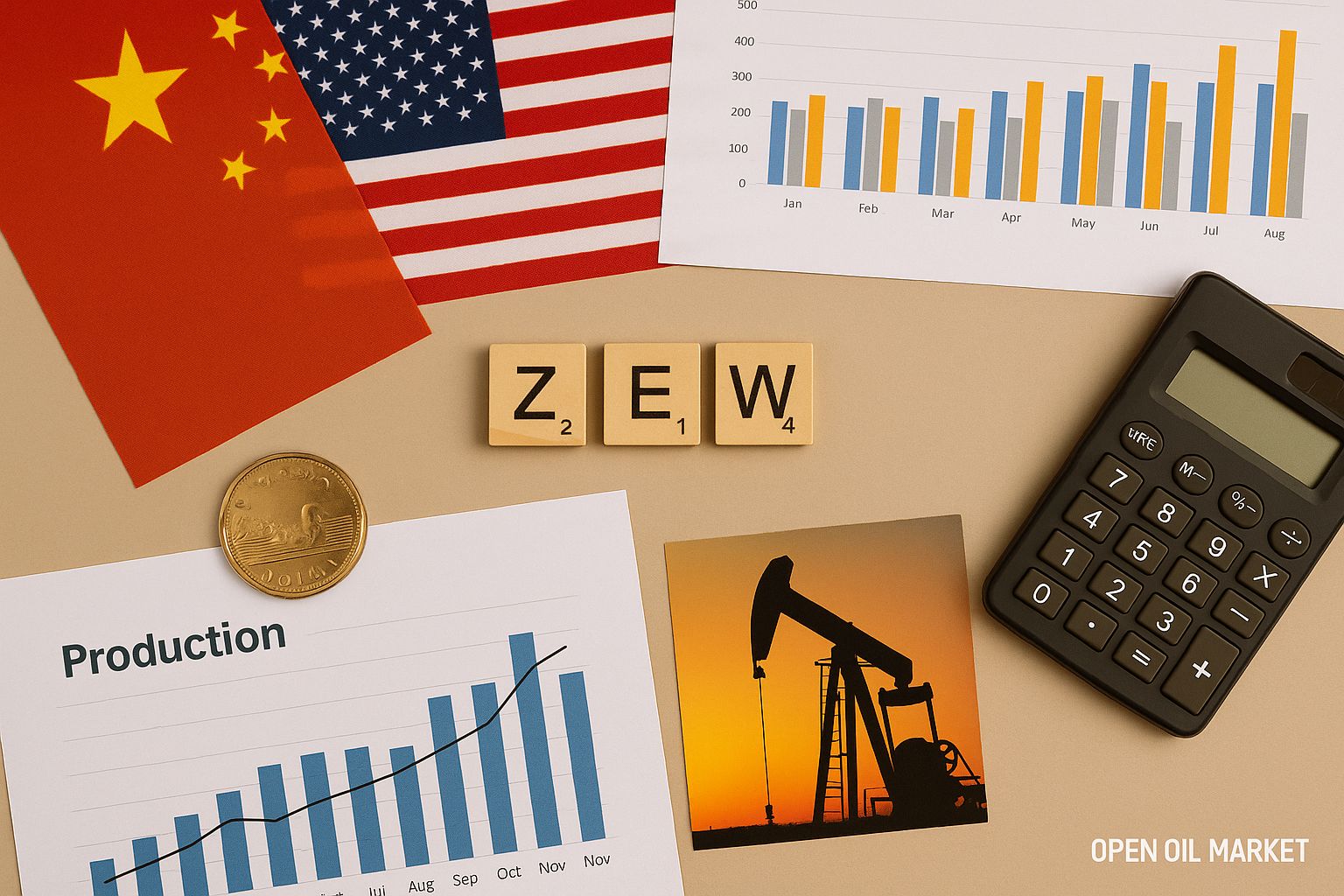Key Energy Sector News as of 17 September 2025: Sanction Risks, Oil Market Stability, Gas Sector Preparedness for Winter, Renewable Energy Records, High Coal Demand in Asia, and Extension of Fuel Price Stabilisation Measures in Russia
Current events in the fuel and energy complex (FEC) as of 17 September 2025 are characterised by a combination of ongoing geopolitical tensions and relative stability in raw material markets. Following summer talks between Russia and the USA, there has been no significant breakthrough in relations – sanction risks remain high. Concurrently, the European Union has surprisingly postponed the presentation of the new (19th) sanctions package, originally scheduled for today: discussions continue within the G7 framework and will take several additional weeks. This reflects the complexity of the sanctions confrontation, although some channels of dialogue between Moscow and the West continue to operate. The global oil market remains in a precarious balance: an excess supply and slowing demand keep Brent prices around the upper $60 per barrel, reflecting market resilience. The European gas market demonstrates readiness for winter – underground gas storage (UGS) facilities in the EU are over 90% full, providing a buffer ahead of the heating season and keeping exchange prices at moderate levels. Simultaneously, the global energy transition is gaining momentum: many countries are recording new generation records from renewable sources, although traditional resources remain necessary for the reliability of energy systems. In Russia, following a recent spike in fuel prices, authorities are continuing to implement a package of emergency measures aimed at stabilising the domestic oil products market. Below is a detailed overview of key news and trends in the oil, gas, energy, and raw materials sectors as of the current date.
Oil Market: Supply Surplus Limits Prices Amid Geopolitical Risks
Global oil prices by mid-September remain relatively stable, staying within a moderate range. The benchmark Brent blend is trading around $66–68 per barrel, while American WTI is within $62–64. Current prices are approximately 10% lower than levels a year ago, reflecting the gradual normalisation of the market following the peaks of the energy crisis in 2022–2023. Several factors are influencing price dynamics:
- OPEC+ Production Increase. The oil alliance continues to incrementally increase supply. At the meeting on 7 September, participant countries agreed on a further increase in the total production quota from October by approximately +137,000 barrels per day (following a rise of +548,000 b/d the previous month). Despite relatively low prices, OPEC+ is striving to regain lost market shares, leading to an increase in global oil and oil products inventories.
- Weak Demand Growth. Global oil consumption is increasing much slower than in previous years. According to the International Energy Agency (IEA), the demand increase in 2025 will be less than 1 million b/d (compared to over +2.5 million b/d in 2023). OPEC also forecasts modest growth (~+1.2–1.3 million b/d). Reasons include a slowdown in the global economy (including declining GDP growth rates in China) and the impact of high prices from previous years, which have encouraged energy conservation.
- Rising Non-OPEC Inventories. Commercial oil inventories in the USA unexpectedly increased in September, signalling the formation of a surplus. Simultaneously, some producers are ramping up exports: for example, Saudi Arabia sharply increased oil supplies to the external market following the end of the high domestic consumption season. Moreover, reduced exports of oil products from Russia are freeing up additional volumes of crude oil for the global market.
- Geopolitics and Finance. The ongoing sanction conflict creates nervousness among market participants. The lack of progress in negotiations means that current restrictions will remain in place, along with the risk of new sanctions, as stated by Western leaders. At the same time, expectations are growing for a potential easing of the US Federal Reserve's monetary policy amid weak macro data – this somewhat weakens the dollar and temporarily supports commodity prices. Risks of escalating conflicts in the Middle East also persist. Collectively, these factors keep oil prices within a narrow corridor – without any prerequisites for either a sharp rally or a collapse.
Gas Market: High Storage Levels in Europe Ensure Price Stability
In the gas market, the primary focus is on Europe's readiness for the winter period. EU countries have rapidly filled gas storage facilities throughout the summer, and by mid-September, UGS fill levels exceeded 90%. This high storage level provides a buffer for the energy system ahead of the heating season. As a result, gas exchange prices remain at relatively low levels: futures prices for gas at the Dutch TTF hub remain around €30–35 per MWh, several times lower than the peak values of the previous winter. Nevertheless, experts warn about possible price volatility in case of an abnormally cold winter or disturbances in LNG supplies. Overall, the European gas market now appears significantly more resilient than a year ago, which reduces the risks of energy shortages in the months ahead.
International Politics: Sanction Confrontation and Its Impact on Energy
The geopolitical situation surrounding the FEC remains tense. On one hand, Moscow and Washington declare readiness to maintain contacts – certain working communication channels between governments continue to operate, and new consultations are permitted. On the other hand, there is no real softening of the sanctions regime; furthermore, intentions have previously been expressed to increase pressure. An important signal is the European Union’s postponement of the presentation of the next (19th) sanction package against Russia, which was expected on 17 September, moving discussions to an indefinite timeframe. According to media reports, this is related to the need to finalise measures in coordination with G7 partners, including a proposal from the USA to develop a mechanism for withdrawing frozen Russian assets. While the temporary pause in the escalation of sanctions gives the market a slight respite, the risks of new restrictions in the energy sector remain. Western countries continue to consider options for tightening sanctions if there is no progress in resolving the conflict. At the same time, direct threats to infrastructure are also increasing: in recent weeks, drone attacks on Russian FEC facilities have become more frequent, adding uncertainty and nervousness to the markets. Overall, the sanctions confrontation and military risks remain key factors of uncertainty for global energy, restraining investment activity and necessitating a restructuring of traditional energy resource supply chains.
Asia: Key Role of India and China in Energy Markets
Asian countries – primarily India and China – continue to play a crucial role in the global energy resource market, combining increased imports with the development of domestic production. **India** maintains a high level of purchases of Russian oil and oil products at preferential prices, despite Western pressure to decrease cooperation with Moscow. The Indian government clearly states that it will not sacrifice energy security: imports from Russia remain strategically important due to the growing needs of the economy. At the same time, New Delhi aims to diversify sources: long-term contracts are being signed with the Middle East, LNG purchases are increasing, and domestic investment is being made to boost oil and gas production. In the short term, rising demand dictates a continuation of significant imports, although India must also consider sanction risks – major Indian corporations are implementing compliance measures to avoid secondary sanctions (for example, some ports are restricting the docking of tankers linked to sanctioned companies).
**China** is also increasing its purchases of traditional energy resources – oil, pipeline and liquefied natural gas – while simultaneously boosting domestic production. Beijing has not joined the sanctions against Russia and remains the largest buyer of Russian oil and gas on favourable terms (Russian grades of oil are sold to China at discounts to Brent). According to customs statistics, in 2024, China imported over 212 million tonnes of oil and around 246 billion cubic metres of gas, surpassing previous year figures. In 2025, imports continue to grow, albeit at a more moderate pace due to high base values. At the same time, national oil and gas companies in China are annually setting historical records for hydrocarbon production, but this is still insufficient to cover domestic demand: the country depends on imports for approximately 70% of its oil and 40% of its gas. Seeking to strengthen long-term energy security, Beijing and Moscow continue to develop cooperation: recently, key parameters for the future Siberian Gas Power 2 pipeline to China were agreed, which will significantly increase Russian gas exports to the Asian market in the long run. Thus, Asia remains the primary outlet for Russian energy resources, allowing Moscow to compensate for limited access to European markets.
Energy Transition: New Records in ‘Green’ Energy and Balance with Classical Generation
The global transition to clean energy in 2025 is entering a new phase. Many regions worldwide are recording unprecedented levels of capacity additions and electricity generation from renewable sources (RES). For instance, in 2024, European Union countries produced more electricity from solar and wind installations than from coal and gas for the first time – this trend continues in 2025 thanks to active additions of new solar panels and wind farms. It is expected that a new record for capacity additions in RES will be set in the EU this year (according to estimates by the European Commission, around 85–90 GW of new installations). In the USA, the share of RES in electricity production has already surpassed 30%, while **China** annually adds tens of gigawatts of new solar and wind power plants, consistently breaking its own records for ‘green’ generation. According to the IEA, total investments in the global energy sector in 2025 will exceed $3 trillion, more than half of which will be allocated to projects in the field of RES, grid infrastructure modernisation, and energy storage systems.
However, the rapid growth of the share of variable renewable generation also poses new challenges. During periods of sunshine or wind calm, traditional power plants are still required to provide backup capacity to cover peak demand and prevent disruptions. Many countries are implementing large-scale projects to create energy storage systems (industrial battery farms, pump storage stations) and deploying smart grid technologies to enhance the flexibility of energy systems. Experts predict that by 2026–2027, total generation from renewable sources could become the leading source globally, finally surpassing coal. Nevertheless, over the next few years, traditional resources – gas, coal, and nuclear energy – will maintain a critically important role as a backup energy source. Thus, the current phase of the energy transition requires a delicate balance: while ‘green’ energy breaks records and increases its share, traditional hydrocarbon sources remain essential for ensuring energy supply stability.
Coal: Asian Demand Sustains High Market Levels
Despite the climate agenda, the global coal market in 2025 continues to operate at historically high levels. Global coal consumption remains near record levels – mainly due to Asian countries. **China** remains the largest producer and consumer of coal, mining over 4 billion tonnes each year and burning these volumes in its power plants. During peak periods (for example, during summer heatwaves and spikes in air conditioning consumption), even this volume is sometimes insufficient: Beijing increases coal imports to avoid electricity shortages. **India** generates more than 70% of its electricity from coal-fired power plants, and absolute coal consumption is rising as the economy expands. A number of other developing countries in Asia (Indonesia, Vietnam, Bangladesh, etc.) are also introducing new coal power capacities, trying to satisfy the growing demand for electricity.
The largest coal exporters – Indonesia, Australia, Russia, South Africa, and others – have increased production and supply over recent years. Following price spikes in 2021–2022, global prices for thermal coal are now being maintained at relatively moderate levels, providing affordable fuel for energy generation while remaining profitable for coal mining companies. Many states announce plans to reduce coal usage to meet climate obligations, however, in the short term, this resource remains irreplaceable for the reliable electricity supply of hundreds of millions of people, especially in Asia. As a result, the coal sector remains in a state of relative equilibrium: demand for coal is consistently high, while prices are moderate and predictable.
Russian Oil Products Market: Continuation of Emergency Measures and Analyst Commentary
In the internal fuel and energy sector of Russia, unprecedented measures have been implemented to curb rising oil product prices in the second half of summer. In August, wholesale exchange prices for gasoline and diesel in the country reached historical highs due to a spike in demand, scheduled maintenance at several oil refineries, and the profitability of exports. In order to saturate the domestic market with fuel, the government introduced temporary export restrictions on fuel: for major oil companies, the ban on the export of gasoline and diesel has been extended until 30 September, while for traders and smaller suppliers, this is applicable until 31 October 2025. Oil refineries are mandated to prioritise shipments to domestic consumers, increasing deliveries to problematic regions (additional fuel supplies were provided, in particular, to Primorye and Crimea, where shortages were previously observed).
In addition to immediate actions, authorities are considering long-term mechanisms for stabilising the oil product market. This includes adjustments to the damping mechanism: an expansion of the permissible price deviation range from the base indicator, at which producers receive compensation, is planned. In simpler terms, the state is prepared to raise the triggering threshold of the ‘dampener’ (currently 10% for gasoline and 20% for diesel), allowing oil refiners to receive payments even at higher internal prices. This step is aimed at reducing the incentive for exports and supporting the economic stability of refineries, keeping more fuel in the domestic market.
Analytical Commentary:
“The industry is in a position where regulators cannot avoid accommodating oil companies. Companies will have to invest significant resources in maintaining the infrastructure of refineries, including through damping subsidies and revenue from oil product sales. Therefore, the decision to change the dampener limits is justified, even though it carries risks for the retail market. In the current conditions, such risks are inevitable. Meanwhile, raising the deviation limits for gasoline and diesel prices will make retail price increases more predictable,” notes Sergey Tereshkin in his commentary for PRIME agency.
By early September, the measures implemented began to yield results: after peaks in mid-August, wholesale fuel prices fell by 7–8%. However, in the second decade of September, price pressure once again intensified – exchange quotations for gasoline and diesel returned to an upward trend, driven by still high demand and temporary factors (multiple downtime of refineries due to maintenance and drone attacks). Retail gasoline prices have risen by more than 7% since the beginning of the year, which is one and a half times higher than the overall inflation (~4%). Nevertheless, the government declares that the situation is under control: filling stations are adequately stocked with fuel, and new deliveries from refineries are coming regularly. The Bank of Russia also expects that as the harvest campaign concludes and refineries resume operations following maintenance, the rise in gasoline prices will slow. The resumption of oil product exports will only be permitted after the domestic market is fully saturated and exchange prices show a sustainable decline. Thus, the comprehensive measures undertaken are aimed at gradually normalising the situation. Authorities are ready to extend restrictions and deploy additional resources to keep gasoline and diesel prices for end consumers within reasonable limits.
Telegram Channel OPEN OIL MARKET – Daily Market Analytics for the Energy Sector
To stay updated on current events and trends in the fuel and energy market, follow our Telegram channel @open_oil_market. Daily reviews, insider industry information, and verified facts are published there – all essential for investors and FEC professionals without unnecessary information noise.




